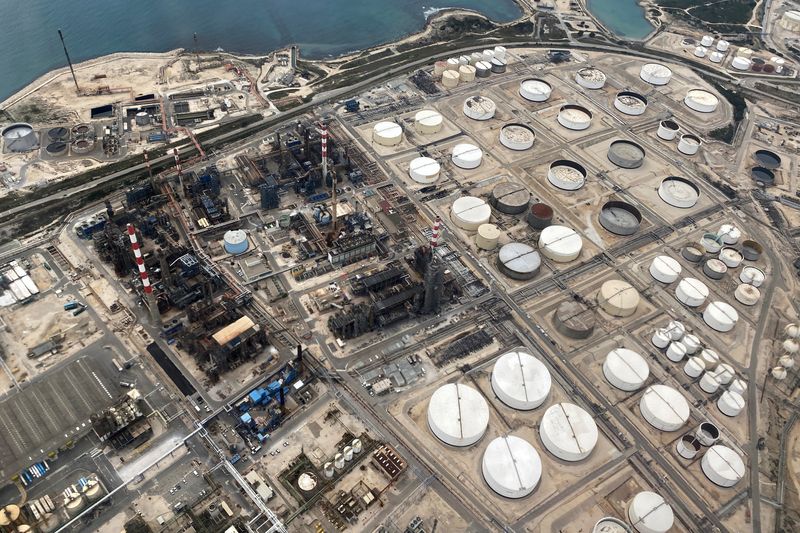By Florence Tan
(Reuters) -Oil prices rose at the start of Asian trade on Wednesday after industry data showed drawdowns in U.S. crude and fuel stockpiles, raising supply concerns and offsetting worries about slowing demand from top importer China.
Brent crude futures rose 89 cents, or 0.9%, to $105.86 a barrel by 0223 GMT. West Texas Intermediate crude futures rose 97 cents, or 1%, to $103.38 a barrel.
The gains come on the back of news from Tuesday that the European Union is working on new sanctions against Russia for waging war on Ukraine that will target Moscow’s oil industry.
European Commission President Ursula von der Leyen is expected to spell out the plans on Wednesday, officials said.
In the United States, crude and fuel stocks fell last week, according to market sources citing American Petroleum Institute figures. Crude stocks fell by 3.5 million barrels for the week ended April 29, the sources said, more than an expected 800,000-barrel drop in a Reuters poll. [API/S]
“The API report had people stop worrying about the demand side and start worrying about the supply side again,” said Phil Flynn, an analyst at Price Futures group.
U.S. government data on stockpiles is due on Wednesday. [EIA/S]
During the previous session, demand worries stemming from China’s prolonged COVID-19 lockdowns that curtailed travel plans during the Labour Day holiday season caused prices to fall by more than 2%.
The global manufacturing PMI contracted in April for the first time since June 2020, with China’s lockdowns a key contributor, Caroline Bain, chief commodities economist at Capital Economics said in a note.
“The big picture is clearly negative for commodities demand,” she said, adding that rising inflation and higher interest rates are starting to bear down on spending.
“While supply constraints may keep commodity prices elevated for some time yet, we think subdued demand will weigh on most prices later this year and in 2023,” Bain said.
On Thursday, the Organization of the Petroleum Exporting Countries and their allies are expected to stick to their policy for another monthly production increase although the group, known as OPEC+, has undershot output targets between October and March, except for February.

Source : Reuters

